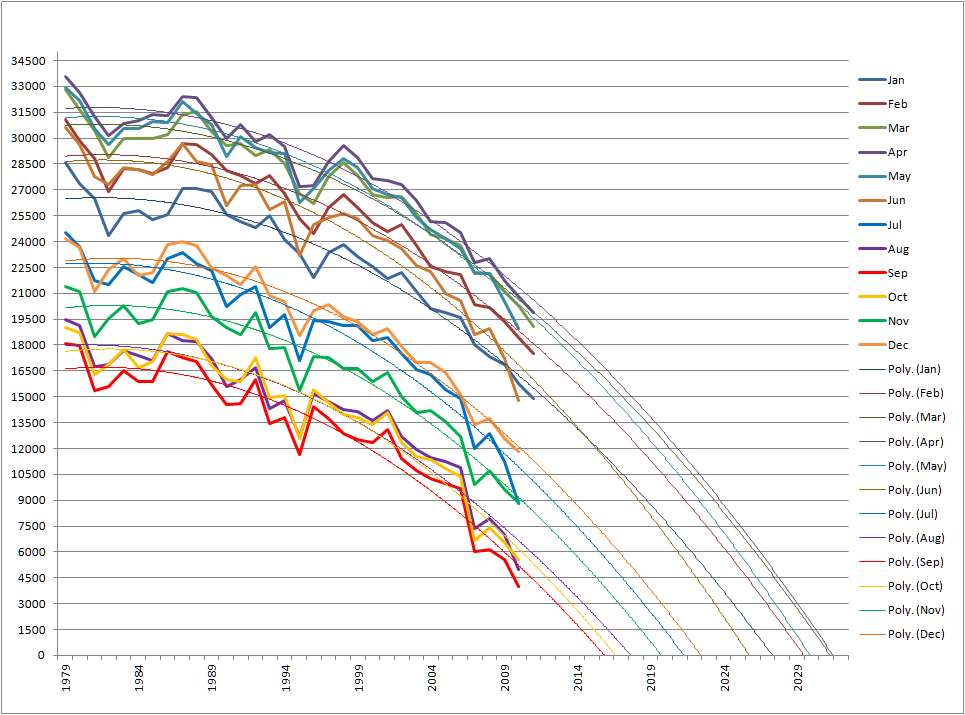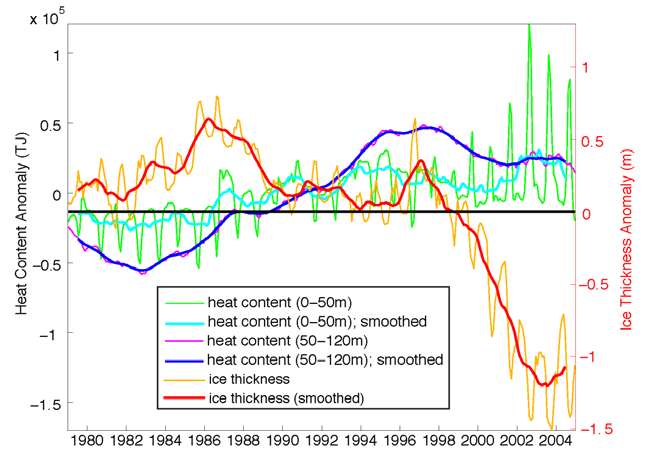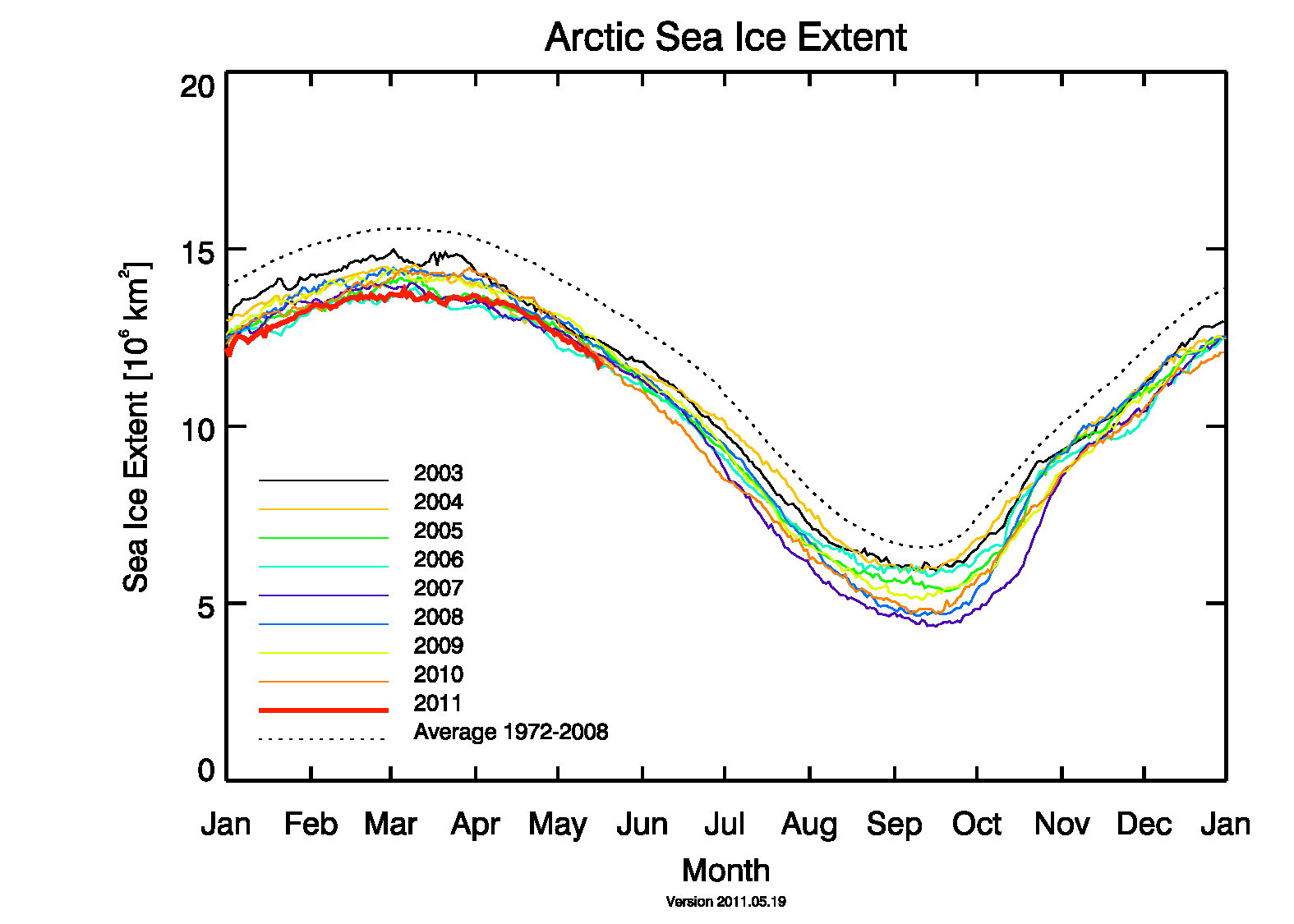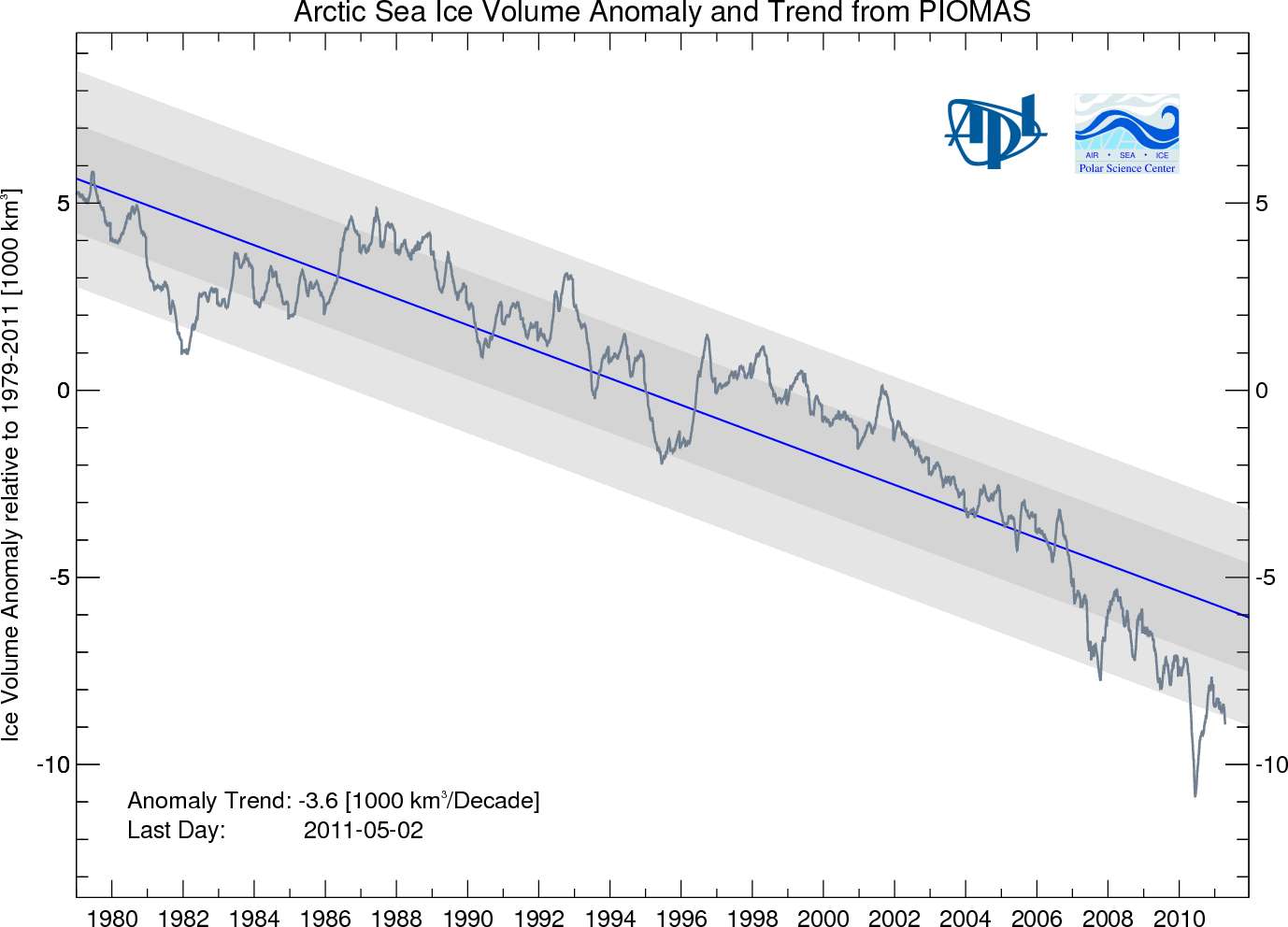No where on earth is global warming more rapid and more shocking than in the Arctic. The most rapid and the most shocking change has been the disappearance of Arctic sea ice. Polar bears have been forced to swim over a hundred miles to land. Walruses have been beached by the thousands in late summer in northern Alaska because ice has retreated hundreds of miles poleward. Rapid shoreline wave erosion has hit Arctic shores previously protected by sea ice. Ongoing data reports show that September sea ice volume has declined 78% since 1979.
Sea Ice Volume is calculated using the Pan-Arctic Ice Ocean Modeling and Assimilation System (PIOMAS) developed at APL/PSC. Anomalies for each day are calculated relative to the average over the 1979 -2009 period for that day to remove the annual cycle. The model mean seasonal cycle of sea ice volume ranges from 28,600 km3 in April to 13,400 km3 in September. The blue line represents the trend calculated from January 1 1979 to the most recent date indicated on the figure. Monthly average Arctic Ice Volume for Sept 2010 was 4,000 km3, the lowest over the 1979-2010 period, 78% below the 1979 maximum and 9,400 km3 or 70% below its mean for the 1979-2009 period. Shaded areas represent one and two standard deviations of the anomaly from the trend. (PSC's caption)
 Sea ice volume by month since 1979 with a quadratic curve fit. The fit is not predictive, but it is reasonable to infer that the Arctic will be ice free in September by the end of this decade, if not sooner. (Fish's caption)
Sea ice volume by month since 1979 with a quadratic curve fit. The fit is not predictive, but it is reasonable to infer that the Arctic will be ice free in September by the end of this decade, if not sooner. (Fish's caption)
Temperature profiles of the upper and mid ocean below the ice show that warm water below the ice, with anomalously high heat content, began melting the ice from below in the late 1990's. The thickness data in the first 2 figures show that the melting accelerated in 2007, so the apparent slowdown in 2005 was natural variability, not a trend.
PDF

Wieslaw Maslowski of the Naval Postgraduate School concluded in his presentation in 2010:
1. The rate of decrease of sea ice thickness and volume appears to be much greater than that of sea ice extent2. Oceanic heat has contributed critical preconditioning to sea ice melt in the western Arctic since the mid-1990s
3. Near ice-free summer Arctic might become a reality much sooner than GCMs (Global Circulation Models) predict
And data just in from aerial surveys north of Alaska and northwestern Canada show that ice thickness is even less this spring in the Beaufort Sea.
A preliminary evaluation of the measurement results shows that one-year-old sea ice in the Beaufort Sea (north of Canada/Alaska) is about 20-30 centimetres thinner this year than in the two previous years. In 2009 the ice thickness was 1.7 metres on average, in 2010 1.6 metres and in 2011 around 1.4 metres. “I expect that this thin one-year-old sea ice will not survive the melting period in summer
Ice free areas of the Arctic ocean adsorb more solar energy and evaporate more heat trapping water vapor, amplifying the rate of Arctic warming. Warmer temperatures cause permafrost melting rates to increase, increasing the release of methane from organic matter frozen in permafrost. Moreover, the rate of methane release from the Siberian platform in the shallow Arctic will increase. Because methane is a potent greenhouse gas its release will further accelerate Arctic and global warming.
Sea Ice Extent is at record low levels too, today, tied with last year and 2006.

